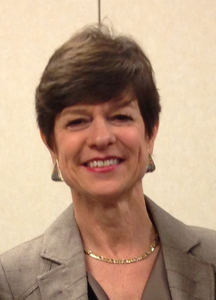7018089
Neurodevelopmental Treatment
Description
No tags specified
Resource summary
Neurodevelopmental Treatment
- General Assumptions of Intervention
- Impaired patterns of postural control & movement coordination are the primary problems
- These impairments are changeable when problems are directly addressed in a task-specific context
- Sensorimotor impairments affect the whole individual
- Typical adaptive motor development is the framework for treatment
- Intervention strategies involve the individual's active initiation and participation with therapist manual guidance
- NDT utilizes movement analysis to identify missing components
- Impaired patterns of postural control & movement coordination are the primary problems
- Therapeutic Model
- Dynamic Systems Theory
- Movement is organized around behavioral goals
- All individuals have competencies and strengths in various systems
- Functional outcomes should be designed in partnership with the client and caregivers
- Learning or relearning requires practice and experience
- Treatment is most effective during recovery or phase transitions
- Dynamic Systems Theory
- Therapeutic Handling
- Through manual contact:
- input
- Direct the client's initiation of movement more efficiently and with more effective muscle synergies
- Support and change alignment of the body in relation to the base of support and with respect to the force of gravity prior to and during movement
- Decrease the amount of force the client uses to stabilize body segments
- Guide or redirect the direction, force, speed, and timing of muscle activation for successful task completion
- Either constrain or increase the flexibility in the degrees of freedom needed to stabilize or move body segments in a functional activity
- Sense the response of the client to the sensory input and the movement outcome and provide nonverbal feedback for reference of correction
- Recognize that the client can become independent of the therapist's assistance and take over control of the posture and movement
- Direct the client's attention to meaningful aspects of the motor task
- input
- Key points of control
- Usually proximal - head, shoulders, pelvis
- From which abnormal patterns can be controlled and tone can be controlled
- And the strength and distribution of tone can be influenced
- While normal movement patterns can be facilitated or a stimulation technique can be used.
- Usually proximal - head, shoulders, pelvis
- Facilitation
- After preparing normal tone and posture
- Facilitate normal movement pattern with minimal effort
- Coordinate postural reactions
- Have an awareness of normal development
- After preparing normal tone and posture
- Inhibition
- R.I.P.
- Patterns opposite tonal patterns
- Individual adapted mixed patterns
- Reduces dysfunctional muscle tone
- Breaks up abnormal patterns
- R.I.P.
- Through manual contact:
- A brain lesion results in stereotyped abnormally coordinated
- movement patterns, which will
- abnormally affect a great number of muscle groups in extensor or flexor synergies
- In the beginning, these patterns are changeable
- As time goes on, they increase with stimulation, effort, and stress
- A brain lesion interferes with development of normal postural control in relation to gravity
- Instead of normal tone, we find hypertonicity, hypotonicity, fluctuating tone, mixed tone
- Instead of normal reciprocal interaction, we find excessive co-contraction, or sudden inhibition of antagonists resulting in the inability to move gradually
- Instead of normal automatic movement patterns of righting, equilibrium, and protective reactions, we find a few static and stereotyped postural patterns of tonic reflexes
Want to create your own Mind Maps for free with GoConqr? Learn more.

